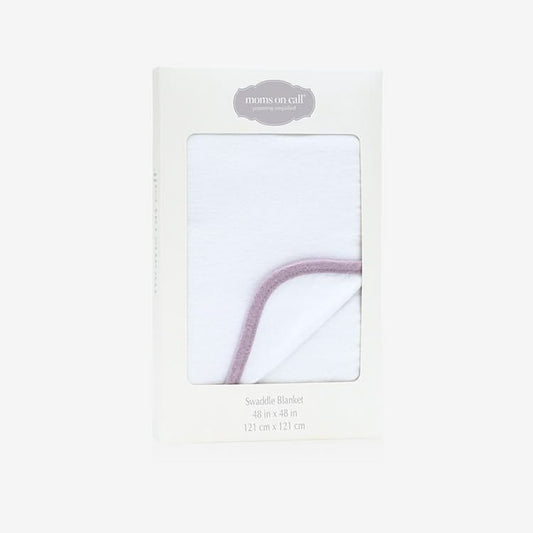Purchasing formula for the first time can be an overwhelming decision for a new parent. Especially those who find themselves in the throes of a breastfeeding journey that all of a sudden isn’t going to plan. Where to begin? What to look for? How to find a formula that is right for your baby? (Spoiler: there is no perfect formula that works for every baby!) And what are the ingredients you should look for? What are the ingredients to steer clear from?
Then there are the parents who are looking to switch formulas for various reasons; digestibility, convenience, price, the perpetual search for the perfect poop. This is normal. Parents in the US switch formulas an average of 2-3 times before finding a formula that works for them. And since formula or breast milk is the sole source of nutrition for a baby until they start solids, finding one that works is critical to a happy baby.
Before we dive in, let’s set some ground rules. No formula shamers allowed! We strongly believe that fed is best, however you choose to do that. Whether you arrived at this crossroad of formula with a one hour old baby on your chest or you’re counting every ounce filling bottles for daycare, you should never feel an ounce of guilt or judgement for ensuring that your baby is nourished and fed.
Purchasing formula in a ‘breast is best’ society can bring a wave of emotions accompanied by a rollercoaster of changing hormone. Often with the difficult acknowledgement that breastfeeding didn’t go as long as you might have hoped. Chin up, mama! 83 percent of parents in the US will turn to formula in the first year of a baby’s life.
This is what we asked out stigma busting friends at Bobbie, the mom-founded company with the only formula to be USDA and EU Organic Certified, to help parents understand their formula basics and what's inside the tub or can. Understanding these things will help to make the best choice for baby when choosing a formula. Because as you'll learn, not all are created equal! There are some great options out there and here at Moms on Call, we love and have seen great success from families using Bobbie. Which happens to be the only mom-founded infant formula company in the US, designed with simplicity in mind. Leaving out the things that babies don’t need like corn syrup, fillers, palm oil, maltodextrin, gluten, persistent pesticides and antibiotics! So that it is gentle on tummies -- making baby and parents happy!
If you want to give Bobbie a try, they have exclusively offered all Moms on Call families 25% off their first order with the code MOMSONCALL25!
If you’re new to the formula world, this deep dive is for you.
Wondering what's actually in baby formula? It's a great question! Especially considering that formula (or breast milk) is the sole source of nutrition for your precious little newborn baby!
While baby formula is often created to supplement breastfeeding, it is also created to be a safe alternative. Infant formulas sold legally in the US must meet strict nutritional guidelines set by the FDA and meet FDA clearance before it can be sold on shelves or online.
Please note: Foreign formulas (including those imported from Europe) and Toddler Formulas (a growing yet questionable category) are not approved by the FDA as a source of nutrition for a baby under a year old.
Many moms, as much as they would love to – simply aren’t able to breastfeed their little one and that’s okay. It’s okay because there are plenty of safe, nutritious, FDA vetted options that are clinically and scientifically proven to provide exactly what your baby needs to grow and thrive in the first year of life.
What Are the Types of Baby Formula?
There are three main types of baby formula, all of which differ based on the type of protein used as the primary ingredient.
-
Most baby formula is made from cow milk protein.
- Here, formula creators take the base proteins that make up the cow milk and alter the mix slightly for it to be suitable for human infants. Cow’s milk is most often used because it has an excellent balance of nutrients as well as it is a little easier to digest for most babies.
- Milk based formula is routine for a healthy, full term baby. What you will find most commonly sold online and on store shelves.
- It’s important to look or ask about the whey to casein ratio to understand how much that milk protein is broken down. This can be a key factor in digestibility.
- Dairy that is sourced from grass-fed or pasture-raised cows has more naturally occurring vitamins and nutrients. You’ll want to look for this type of milk source whenever you can.
- Those who are allergic to cow’s milk can use one of the other two variants. Less than 5% of babies have a cow’s milk allergy, but talk to your healthcare provider if you are concerned.
-
The second most common formula variety is soy formula.
- Here, the protein base used comes from the soybean plant; it is often displayed as “soy protein isolate”.
- This formula type is ideal if your infant has food allergies like lactose intolerance or can't properly digest cow milk proteins.
- It’s also a good choice if you and your family aim to consume a plant-based diet.
-
Formulas made with “protein hydrolysate”.
- Here, the proteins from a cow’s milk base or even a soy milk base are further broken down. Making them even more digestible.
- This formula type is made for sensitive stomachs and is often a special recommendation and a last resort for parents who have tried everything above.
While some edge cases exist, such as formulas made with goat milk protein, these are the three most common you’ll find.
It’s important to note that there is no approved goat milk infant formula here in the US as a regulated, approved infant formula option. Many pediatricians can prescribe specialized formulas if your infant has a specific medical condition requiring such accommodations.
What Are The Different Forms of Formula?
All of the above baby formula types come in three main forms.
-
Powdered formula
- The most common and the least expensive option.
- This formula is scooped into a bottle or container, where you mix it with water that is safe for drinking. These are typically sold in metal cans or plastic tubs.
-
Liquid concentrate formula
- The second most common. It’s also mixed with water safe for drinking.
- This type of formula can be better for certain ingredients, digestive issues, or if your baby prefers the texture. It mixes into a smoother liquid final form than powder.
-
Ready to use or ready to feed format
- Incredibly convenient and doesn’t need to be mixed with anything.
- It’s also the most expensive since it doesn’t require any preparation on your part aside from proper storage. This form of formula is sterile and often used for high risk babies or those with compromised immune systems.
Which type of formula is the best, nutritionally speaking?
This is a tricky question. All infant formula sold in the US must fit within certain guardrails for percentage of carbs, proteins, fats, and must have all the necessary nutrients and minerals that a baby needs to grow. What is best comes down to what you value as best for you and your baby. Is it about having a USDA Organic seal that prioritizes suppliers that meet all organic standards for non GMO, no pesticides or antibiotics? Is best for you to have a “sensitive” formula that is lactose free but contains corn syrup as the carb source? Or is best for you what you can find consistently and conveniently at the shop around the corne?
You should choose a baby formula based on your own food values, brands you want to support, and the budget and convenience level that is right for you and your family.
Typical Ingredients in Formula
Baby formula is created with a rich collection of ingredients and nutrients so that it can provide babies everything they need for their immune systems, brain development, and overall infant nutrition. Within the US, every infant formula that is marketed for distribution must meet the specific nutrient regulations as provided by the FDA. These regulations provide a minimum amount of specified nutrients that do not exceed the maximum.
Three Macronutrients
All types of baby formula will have some amount of these three main macronutrients: protein, carbohydrate, and fat.
-
Protein
- Protein is needed so that baby can grow new tissues, like muscles, but also to aid their continued growth and development.
- Formula with whey as the protein source can help with digestibility especially if the whey to casein ratio is 60:40. Look for that in an infant formula or be sure to ask the company what their whey to casein ratio is.
- This can mean less spit up, less fussiness, and better poops.
-
Carbohydrates
- The primary energy source for babies.
- Most types of baby formula use lactose as the main carbohydrate source. Having lactose- better yet, organic lactose- as the first ingredient is a sign you’re headed in the right direction. 100% lactose is the same carb source found in breastmilk.
- Apart from lactose, you might also find baby formulas that have other types of carbohydrates such as maltodextrin, sucrose (table sugar), or corn syrup solids. Sometimes these are subbed in over lactose because they are cheaper. Other times it’s a non-dairy substitute for a baby with a milk sensitivity.
- It is important to note that while corn syrup is a simple carb that is easily digestible by a baby’s digestive system, feeding your baby a formula with 100% carb source from corn syrup is the equivalent in sugar as feeding them a can of Coke a day.
- When moms start to investigate ingredients, we often see them surprised to find corn syrup as the first ingredient to their baby’s formula. This is a common reason parents want to try switch formulas to something lactose based.
- One South Carolina mom, Lynnsey Baker, said she switched to Bobbie because she wanted a formula that matched the lifestyle and food values she’d recently switched to for her whole family, and her newborn should be included. “A few years ago our family made the switch to a more organic, non-toxic lifestyle and when we had Charlie and breastfeeding didn’t work out, I wanted to choose a product that met the standards of what we incorporate into our everyday diet. And the best part yet is that his poops are so much less strenuous than the previous formula we were on!”
-
Fat component.
- This critical macronutrient actually makes up about 40% to 50% of breast milk’s energy component.
- Some baby formula brands use plant-based oils in most cases to supply these nutrients. In breast milk, the fat is made up of several fatty acids and include EFA’s like docosahexaenoic acid (DHA) and arachidonic acid (ARA).
- When it comes to types of oils there are a limited number of options that can make up a fat blend for US formulas. You can basically choose between soy oil, palm oil, coconut oil, and sunflower/safflower oil. A blend of three of these can help make up a solid fat source that a baby needs to get nice and chunky.
- Recent research has shown that palm oil can cause digestive problems and lead to more chronic constipation. Opting for a formula without palm oil is another big check box for easy digestion.
- While soy can also get a bad rap because of issues with GMO’s and phytoestrogens. It’s important to note that organic soy oil is the fat part of soy- not the protein. The concern with phytoestrogens is greatly reduced for organic soy oil. While 96% of soy in the US is conventional soy, there are infant formulas that opted for organic soy which is non-GMO.
DHA is not required in US Formulas. What You Need to Know:
Another fat found in formula is the form of DHA and ARA, which is key for brain development and eye development. It might shock you to learn that the US has no set standard for DHA in infant formula. This is a big reason many parents opt for foreign formula on the black market from Europe. Europe has much stricter nutritional guidelines for nutrients like DHA and iron, while putting limits on the amount of corn syrup that can be used for the carb source. (They actually use less iron than most US formulas, which research shows to be more optimal for baby.) In the US the only way to know how much DHA is in your baby’s formula is to call the 1-800 number on the back or scan the website to ask.
At Bobbie, we are the only US formula that meets the EU standards for iron and DHA in infant formula of 20mg/100kcal. This is a critical nutrient and one we did not skimp on in our formula. We highly encourage parents to take the time to call and ask how much DHA is in your baby’s formula. The results might shock you.
No two formulas are exactly the same. So, don’t be surprised if the ingredients list slightly varies from formula to formula. As stated the FDA strictly regulates the nutritional content of formulas so the difference should not be too wide.
Other Ingredients
While the three macronutrients above make up the wide share of what you’ll find in typical baby formula, formulas also have additional micronutrient ingredients as recommended by health care organizations like the American Academy of Pediatrics (AAP) and the Food and Drug Administration in the United States. Remember- more is not always better. And you don’t have to have the whole kitchen sink in your formula to make it “the best.”
-
Vitamins and minerals.
- Your little one has specific nutritional needs, minerals like zinc and calcium are needed for your baby’s growth and development. As well as vitamins like vitamins A, B, C, D, E, and K are needed for strength, energy, and support.
- Baby formulas with plenty of vitamins and minerals are a must.
- Many formula ingredient labels from formula manufacturers are a little less transparent than they should be. This can make them seem like they don’t have some essential vitamins or minerals when they actually do. For instance, vitamin B12 can also be called its official names, which are “cobalamin and cyanocobalamin". Do a little research before buying a formula to make sure that it has all the nutrients you’re looking for.
- That being said, most good baby formula brands these days contain what your little one needs to grow healthily. Very few manufacturers exclude any major vitamins or minerals given their importance in a baby’s development and the FDA’s strict regulations.
-
Enzymes and amino acids.
- Enzymes are compounds that will help your infant to break down other components for easier digestion or absorption.
- Additional amino acids are important for growth and so, added to your infant formula.
-
Prebiotics and probiotics.
- These are collections of either helpful bacteria or substances that promote the growth of healthy bacteria in your baby’s intestines.
- All humans require a healthy microbiome (the bacteria that live in your gut and help you digest and break down the food you eat) for proper nutrition.
- This may not be commonly seen in infant formula. It is up to the parent if this is something they want standardized in every bottle or regulate on their own based on baby’s age and diet.
What About Iron?
You’ll also find “iron-fortified” or “iron-rich” baby formula. According to the AAP, iron is a necessary mineral that your baby needs to properly develop, particularly during infancy when they’re so vulnerable.
The US has a much higher range of iron that can be included in infant formula than over in the EU. Where they rely on more recent research. Added iron can often be one of the reasons why constipation can start when a mom introduces formula for the first time.
Bobbie chose to align our iron levels with those in the EU, while also falling into the much lower end of US iron guidelines. We feel this is the optimal level of iron based on the most recent science. The takeaway here is that if your baby is starting a new formula and is super constipated- look to the iron content as a possible cause.
Breastfeeding already provides this mineral, but mothers who use formula exclusively should always seek out iron-fortified brands whenever they can.
Are There Ingredients In Breast Milk That Formula Doesn’t Have?
The short answer here is yes, breastmilk will have some properties that formula doesn’t. However, these are often things that come from the mother’s own body in reaction to the baby’s own development. For instance, the mother’s body can provide living antibodies and white blood cells to her baby through breast milk, which is simply impossible for formula.
However, this doesn’t mean that formula can’t give your baby what he needs to grow properly. Formulas these days are scientifically-made and tested to provide babies with necessary nutrition.
It’s entirely possible to raise your baby on breast milk alone, formula alone, or a combination depending on your unique needs and situation.
Overall, what is in baby formula will slightly vary depending on the brand and its unique mix of ingredients. It comes down to sourcing, ingredient choices, asking the questions to the brand, and putting your purchasing dollars towards a company that you believe is nourishing your baby in the best way possible.
More questions? Check with your pediatrician or reach out to us @bobbie. We’d love to hear from you and help you find a great choice for you and your little one (even if it’s not us)!
And if you want to give Bobbie a try, don't forget to use MOMSONCALL25 for 25% off!
























